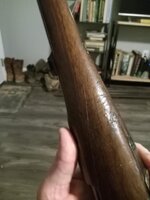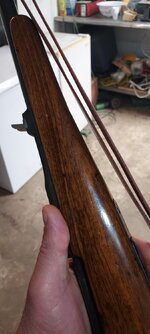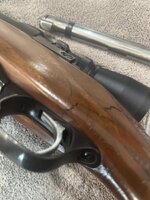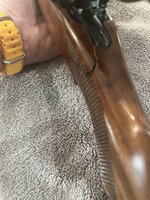@BigC usually a crack happens for a reason. Being minimally invasive is good, you just have to evaluate WHY it cracked and address that. Different actions create different stresses on wood, and a crack in one place may have different stresses on it than in a different place. A crack that formed from recoil setting the action back into the wood needs different treatment than something that happened because the wood expanded in wet/humid conditions around the metal forcing a crack to open. In addition to the crack repair, the real solution could likely involve bedding or sealing the wood not to address the crack itself, but to address the root cause of the crack so it doesnt get worse or happen again.
I and (I assume) others posted more major repairs, not to say thats the only way to deal with a crack, but to show that even a **major** crack is fairly easily repairable in a way that can handle use and recoil. Smaller cracks usually are not such a big deal, just smart to make sure it wont happen again while youre at it.
I and (I assume) others posted more major repairs, not to say thats the only way to deal with a crack, but to show that even a **major** crack is fairly easily repairable in a way that can handle use and recoil. Smaller cracks usually are not such a big deal, just smart to make sure it wont happen again while youre at it.
Last edited:




